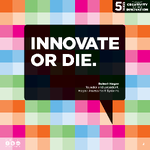 In August I wrote about some interesting findings about how our personality makes us more or less physically attractive to others (read Part I). We learned that being friendly, attention-seeking, and demonstrating a genuine concern in networking with and helping others enhances perceptions of physical attractiveness, while being distant, indifferent, passive-aggressive, and eccentric can be real turn-offs. These results represented trends across people in general, regardless of their gender. To satisfy my insatiable curiosity, I decided to delve further by investigating whether there are personality characteristics that differentially relate to the physical attractiveness of men versus women.
In August I wrote about some interesting findings about how our personality makes us more or less physically attractive to others (read Part I). We learned that being friendly, attention-seeking, and demonstrating a genuine concern in networking with and helping others enhances perceptions of physical attractiveness, while being distant, indifferent, passive-aggressive, and eccentric can be real turn-offs. These results represented trends across people in general, regardless of their gender. To satisfy my insatiable curiosity, I decided to delve further by investigating whether there are personality characteristics that differentially relate to the physical attractiveness of men versus women.
Before getting into specific results for the sexes, I think there are some general results worth mentioning. Overall, I found that personality is far more important for predicting the physical attractiveness of women than for men. Chew on that for a second. Across 28 scales I found five predictors for men and eight for women. More telling is that HPI and HDS account for four and two times more variance (respectively) in predicting physically attractiveness for women than for men. Overall results for MVPI were similar between the sexes. What this means is the bright and dark side of our personalities may have a greater impact on the physical attractiveness of women than they do for men. What I believe this also says is that we men don’t have to worry as much about our behavior in attracting a mate; other factors may be more important (wallet size?).
Now that I have your attention, let us begin with the similarities between the sexes…all one of them! I found only one dimension of personality that provided a similarly strong relationship in predicting physical attractiveness in both sexes; MVPI Affiliation. For both men and women, we find attractive those who demonstrate an intrinsic interest in socializing with, networking with, and getting to know others.
As previously mentioned, I only found five predictors of mention for the physical attractiveness of males. I found positive correlations for HDS Dutiful and MVPI Affiliation. I found negative correlations for HDS Excitable, HDS Skeptical, and MVPI Science. In plain language, men are considered more attractive when they are the types who are more conforming team players who don’t rock the boat. For some reason, the ingratiating, deferential type is found to be more alluring. We also see that the emotionally volatile, cynical, distrusting scientists are considered less attractive. So apparently the type of guy who doesn’t believe it until he sees it and wants to see the proof in the form of facts is found to be unattractive. Yikes, that one hits close to home. Who knew that logic was a turnoff?
I find a few more things interesting about these results. First, I was a bit surprised that the attractiveness of the strong, alpha male archetype was not well supported by these data. Second, there were no significant effects for HPI, indicating that normal day-to-day behavior does not seem to have a noteworthy effect on the perceived physical attractiveness of males. Lastly, I think it is intriguing to see where the differences between the genders fall on these scales. For four of these five scales (all but MVPI Affiliation), there was a negligible effect for women’s perceived attractiveness. In other words, emotional volatility, cynicism, ingratiating behavior, and a desire for fact-based decision making have almost no effect on whether we find women attractive. I find that first one a bit surprising!
Now let us turn our attention to the fairer sex. I found eight personality predictors of physical attractiveness for females. There were positive correlations with HPI Interpersonal Sensitivity, HDS Mischievous, HDS Colorful, and MVPI Affiliation, while I found negative correlations with HPI Learning Approach, HDS Reserved, HDS Leisurely, and HDS Imaginative. In non-Hoganese, these results mean that we find women attractive when they are warm and friendly, charming (even if a bit manipulative), attention-seeking, and interested in teamwork and social networking. Altogether, this paints the picture of a charismatic type of woman as most attractive. At the same time, we appear to be turned off by the studious, aloof, passive-aggressive, and eccentric types. The first part is intriguing. According to these results, the diligent female students who tend to know more about many different subjects are less attractive to us. I hesitate to say, but this result seems to partially support the attractive bimbo archetype.
There are two more points of interest within these results for females. First, these data do not support other research indicating that masculine, assertive females are less attractive. Second, as before, it is interesting to look at the disparate relationships in some of these predictors for the other gender. HPI Interpersonal Sensitivity, although an important predictor for female attractiveness, had no relationship for males, indicating that friendliness or agreeableness has no bearing on perceptions of physical attractiveness in males. The other contrast of note is with HDS Mischievous. It is positively correlated with attractiveness for females but negatively correlated with attractiveness for males. Hence, we find the charming, manipulative, risk-taking females appealing while their male counterparts are more repelling. That is a result I have yet to understand.
In summary, personality seems to matter more for females than males in predicting physical attractiveness. According to this single study, males need only concern themselves with being a better team player and less of a Doubting Thomas to increase their hotness factor. For women, a little charm will go a long way to being seen as more attractive. Just make sure to keep the random factoids and wild ideas to yourself.
In the third and final installment of this series, I will split the data once more and investigate how the gender of both the target and the rater affect perceptions of physical attractiveness. Sneak preview: male personality does matter more; it just depends on who you are asking.


 The Hogan Personality Inventory is measure of personality assessment that provides leaders the strategic self-awareness they need to get along and get ahead. Raw scores on HPI subscales, available in many of Hogan’s reports, allow interpretation above and beyond main scale scores.
The Hogan Personality Inventory is measure of personality assessment that provides leaders the strategic self-awareness they need to get along and get ahead. Raw scores on HPI subscales, available in many of Hogan’s reports, allow interpretation above and beyond main scale scores. Is there such a thing as being too creative? Although creativity is largely associated with positive work outcomes, our research shows that, in excess, creativity can be a powerful roadblock to career success.
Is there such a thing as being too creative? Although creativity is largely associated with positive work outcomes, our research shows that, in excess, creativity can be a powerful roadblock to career success. This axiom is all too relevant for entrepreneurs today. Companies like Google and Pixar embrace a collaborative and innovative culture with unconventional work hours and offices. Why do they go through such great lengths to foster their employees’ creativity? Because that’s what a creative employee’s personality demands.
This axiom is all too relevant for entrepreneurs today. Companies like Google and Pixar embrace a collaborative and innovative culture with unconventional work hours and offices. Why do they go through such great lengths to foster their employees’ creativity? Because that’s what a creative employee’s personality demands. After analyzing the personality profiles of Homer’s Greek heroes, Achilles and Agamemnon, Rastislav Duriš, an HR consultant, and Matus Porubjak, a philosophy professor, asked the question, “In which occupations, organizations or environments would these heroes prosper today?”
After analyzing the personality profiles of Homer’s Greek heroes, Achilles and Agamemnon, Rastislav Duriš, an HR consultant, and Matus Porubjak, a philosophy professor, asked the question, “In which occupations, organizations or environments would these heroes prosper today?” In August I wrote about some interesting findings about how our personality makes us more or less physically attractive to others (
In August I wrote about some interesting findings about how our personality makes us more or less physically attractive to others (